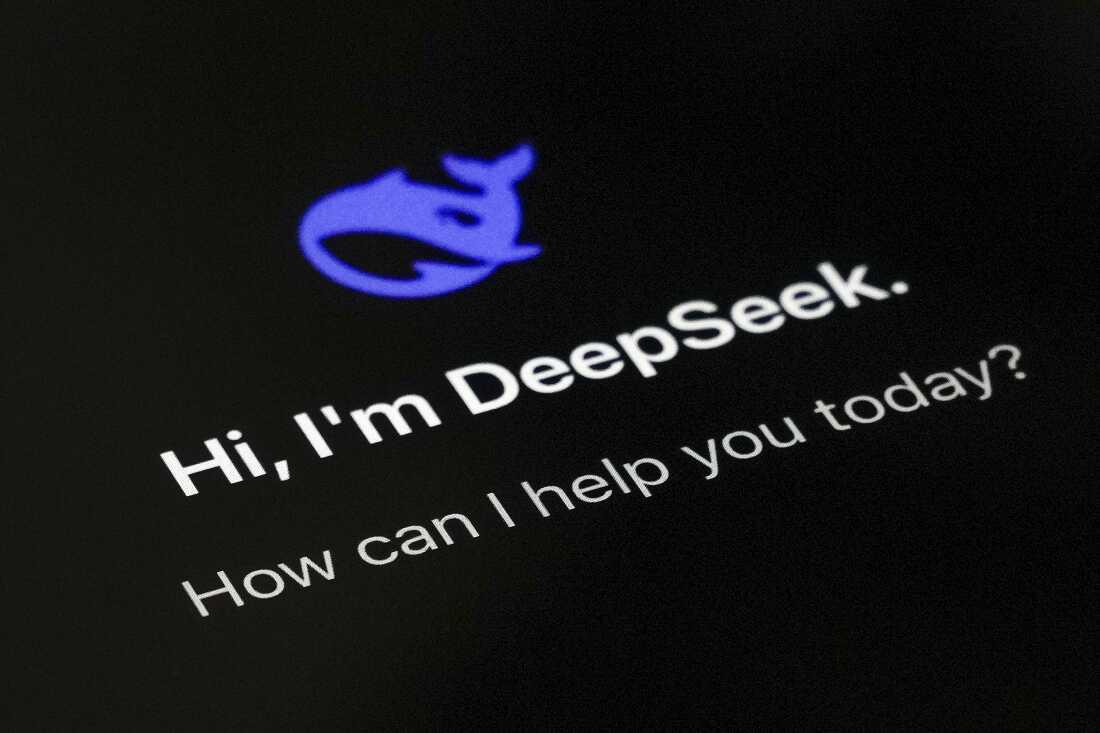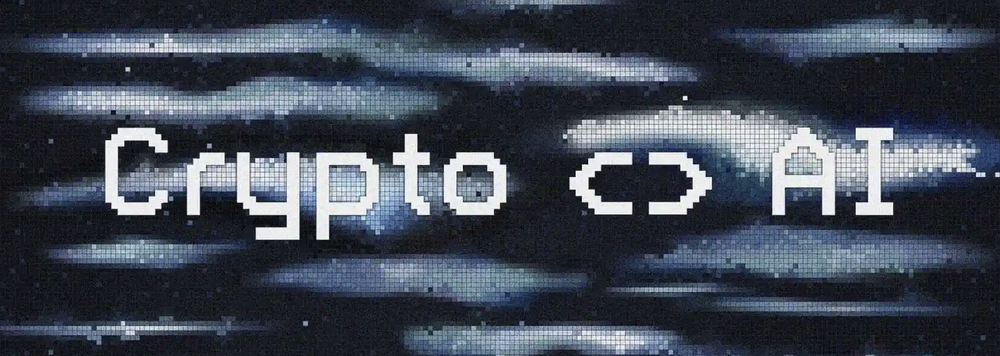Author: YBB Capital Researcher Zeke
1. AI is inevitable, but Crypto x AI?
At the beginning of 2025, DeepSeek, created by Huanfang Quantitative, dropped a "nuclear bomb" on the AI circle. A Chinese AI model that uses only 2048 NVIDIA H800 GPUs and has a training cost of US$5.58 million (about one-tenth of Meta) has directly achieved the level of arm wrestling with GPT-4o and Llama 3.1 in benchmark tests such as MMLU and GPQA, and even slightly surpassed these top models from Silicon Valley in terms of complex reasoning and Chinese semantic understanding. The United States has imposed a chip blockade on China for many years, but it has encountered a dramatic deconstruction on DeepSeek's computing power sandbox. Under the siege, Chinese AI has finally developed a technical path that is in line with national conditions but comparable to the cutting-edge. A set of open source, low-cost, and homogeneous combination punches directly penetrated the U.S. computing power moat.

Chinese technology products, which are always inferior to those of the United States in terms of performance, always give me a stereotype of cheapness and plagiarism. I believe this is also the intuitive perception of most people about Chinese Internet companies' products. But this time DeepSeek is indeed different. I will not talk about whether the user experience is better than ChatGPT, which is a highly subjective feeling. Judging from the tense reactions of American politicians and technology giants who frequently mentioned this matter, China is no longer playing the role of a technology follower this time, and the global shock caused by this is also very strong.
Although my wallet was the first to be affected, and to some extent this was indeed due to a misjudgment of the development of traditional AI, I still want to talk about my opinion on the impact of DeepSeek on Crypto.
1. NVIDIA was the most seriously hurt in this incident. First, the demand for AI computing power was questioned, and second, NVIDIA's unified hardware and software computing architecture "CUDA" was bypassed. Friends who are familiar with the AI field should be familiar with CUDA, which is one of the important cornerstones for promoting the development of modern AI. When large model developers use NVIDIA GPUs, they generally do research and development based on CUDA. Using CUDA has lower requirements for developers, because some functions have been encapsulated in CUDA, and there is no need to pay attention to too many details when using it, but it will definitely lose execution efficiency.
Since CUDA is a general-purpose programming framework, it will lead to a loss of flexibility when training models. DeepSeek's approach is to directly use PTX (an intermediate instruction set framework designed by NVIDIA for GPUs) to bypass the hardware limitations on training speed and shorten the training time. Other models take 10 days to train, but DeepSeek can complete it in 5 days. This also means that if DeepSeek intends to adapt to Chinese-made GPUs in the future, it will be more adept at hardware adaptation, and NVIDIA's AI chip throne will also be shaken. (This paragraph comes from a report on the analysis of DeepSeek's training process by South Korea's Future Asset Securities)
In addition to the strong impact that the stock price drop will have on the cryptocurrency circle that is strongly related to the US stock market, I personally think that it is a good thing for decentralized computing power projects in the long run. First of all, more personal GPUs will be able to play a role in the future. Secondly, if DeepSeek's small and beautiful open source model path can be successful, it will force a large number of AI companies to be forced to open source. In the future, the demand for computing power required for local deployment and secondary development will become more and more vigorous. Judging from the hardware requirements of DeepSeek R1 with a minimum parameter of 1.5B to a maximum parameter of 70B, from the lowest NVIDIA GeForce GTX 1660 Super to the 40 series, 50 series, and professional-level A100 and H800 GPUs, there is an opportunity to contribute excess computing power again. For decentralized computing power projects that currently have a relatively transparent presence and a somewhat tasteless computing power supply, this may be an opportunity to turn things around (of course, the premise is that the delay can be low enough).
2. AI framework projects were the hottest emerging track in Crypto before DeepSeek dropped the "nuclear bomb", and it was also the last track I wrote about before the Spring Festival. Now, under the bombardment of DeepSeek, almost all of them are approaching zero. After all, others can compete with OpenAI with a cost of less than 6 million, while our FDV's leading project with more than one billion has not yet produced some AI agents that can be called practical.

We have been pursuing assetization almost obsessively since the inscription era. The current cryptocurrency circle is quite open to assetization. AI framework projects that are not on the chain at all only need an open source Github code library and a social account to issue coins. The price of "library-based coins" is that you must be able to accept the dimensionality reduction attack of the two-dimensional foil thrown by traditional AI companies one day.
In the golden age of AI development, the killer move that traditional Internet companies can offer will not be limited to DeepSeek this time. The development of AI in the game between China and the United States will only get faster and faster. What directions should Crypto combine with in the upstream and downstream of AI to highlight the advantages of decentralization and not be killed by an inexplicable AOE is the key to the problem. Roughly dividing the technology stack of Crypto x AI, we can divide it into computing power layer, data layer, middleware layer, and application layer. In these layers today, I still can't feel the necessity of Crypto. If we consider privacy and security from the perspective of the future, it may be a good angle. After all, AI Agent replacing or assisting human work has become a reality today. How to ensure the privacy of work data and private data processed by AI may be a problem that traditional Internet companies cannot solve. Furthermore, if an AI Agent has the right to pay, how to ensure the security of the wallet will also become a problem. Using blockchain as the compliance audit layer of the AI model should be our main development direction in the future.
On the other hand, we need to know where to incentivize. In addition to giving birth to computing power layers and model sharing, incentives can actually allow humans to teach AI how to interact with the virtual world. Unlike LLM training, which naturally has decades of knowledge of the world's Internet corpus, teaching AI how to act correctly actually requires humans to constantly mark the correct position. Just like teaching a visual model to recognize what an animal is and what a car is, this is not something that can be accomplished by an outsourcing company finding a group of college students. Giving birth to an AI Agent that can interact with the virtual world requires a complex decentralized network. Teaching AI through countless human individuals is also a direction. This has been discussed in more detail in my past articles. What else can be done around incentives? Combined with DePin, it teaches intelligent entities to interact with reality, incentivizes AI to gain attention, incentivizes secondary creation of AI (such as Bittensor's incentive method is a good example), and the token incentive mechanism is automatically adjusted by AI (this point is derived from a question I asked in a previous article. The original words are as follows: When a decentralized project becomes extremely large and enters the mainstream, what should be done about deflation and inflation? Rely on simple rules of code, or listen to the project team with only a few or dozens of people? Or those souls? Oh, yes, we also have governance tokens. But governance tokens are meaningless before solving the witch problem. Democratic voting can never be reflected in governance proposals. After all, a16z can veto the vote of a large community with only a few wallets, so what is the point of voting? And so on.
We cannot gather a group of high-tech AI talents like traditional Internet companies, buy or rent a large-scale GPU cluster for training, and it is a pipe dream to create a DeepSeek in the blockchain. The significance of Crypto is to give another field irreplaceable decentralized characteristics, just like we once gave financial freedom. AI is an inevitable narrative for mankind, but what role can Crypto play in it?
3. This is the first time I have mentioned Wordcoin in an article. This crypto-utopia project initiated by Sam Altman seems a bit ridiculous to me even now. Whether to record your iris means you need to make a choice between state surveillance and corporate surveillance. This is like choosing to take the red pill or the blue pill in The Matrix.
However, the concept of universal income or inclusive finance may no longer be a joke at this stage. DeepSeek, which can locally deploy cutting-edge large models, has enabled intelligent agents to appear in hospitals and government agencies in China. According to McKinsey's 2024 forecast report, 50% of jobs will be replaced by AI as soon as six years later. Future versions of Wordcoin may even be issued uniformly by the government. If this process continues to intensify, then tokens related to the concept of inclusive finance may also appear in large numbers and be repeatedly hyped. According to the five- or six-year window period, it also coincides with Trump's term of office. Will the crypto president issue a similar token? I think it is very likely.
4. According to Elon Musk’s recent remarks, AI may win the Nobel Prize in 25 years. So I think it is more interesting and more effective to promote AI research through blockchain fundraising (even contributing computing power, storage, methods and other resources) than the current DeSci. Maybe I can call it Decentralized AI Science? That is, DeAIS.
2. Meme Coin is no longer a meme
In the past, when we analyzed Meme Coin, we talked about subculture, community consensus, and communication effects. Now, I sit in front of GMGN and analyze conspiracy groups, head addresses, and Dev's insider trading every day. When a CA is sent to various dog groups, it is time to charge. Today's Meme is more outrageous than any time in the past. In the current stage of Pump.fun, don't even think about finding a token that can help you sleep peacefully. You may just go to the toilet and the K line will fall off a cliff.
The continuous simplification of the threshold for asset issuance and the high anonymity of blockchain have led to the intensification of this crazy casino culture. An unknown grass-roots team can use the cryptocurrency circle as an ATM. The evolution of Meme is becoming more and more random. It is not only about the currencyization of the library mentioned above, but also any event, any person, and even any AI can be converted into currency. Without a cultural core and consensus, the so-called leader of a school can be completely forgotten in just a few weeks. The celebrity currency trend started by Trump only lasted for a month. Under a tweet from President Milley, hundreds of millions of funds flowed from Sol to the outside world again, and Meme began to recede. President Milley's response to this was also very simple. He deleted the tweet and replied to everyone: I don't know.
The rapid development of AI has taken away too much of the world's attention, and the development of technology has been difficult. Retail investors who have given up value investing can only bet that they are one of the lucky few in the pig-killing plate. The increasingly scarce liquidity is repeatedly extracted, and what is reflected in reality is the red K-line in Cex and Dex day after day, as well as the disdain of traditional capital and outsiders for copycats.
3. Carving a boat cannot ask for the lost sword
The law of cycles has obviously failed, and all the ideas of looking for the sword by carving a mark on the boat will fail to find the sword. BTC bullish does not mean that the altcoins will be bullish, but BTC bearish will definitely lead to altcoins bearish. We must innovate our understanding of altcoins. The altcoin market is no longer a market that can be supported by a white paper. A large project listed on the top Cex must be mature enough to support its own coin price.

Looking back at the growth of tokens over the past seven years, there were less than 2,000 tokens listed in the market in 2017, while in 2024, there were nearly 25,000 tokens listed (data from CoinGeko, including delisted tokens). The exponential expansion of the number of tokens is essentially the irreversible evolution of the blockchain's low-entropy value system to a high-entropy noise system. While each token in 2017 still carried the ideal of "disrupting the world", the tokens in 2024 have evolved into chips for liquidity exit. The emergence of more tokens has not brought more innovation and implementation, but the high valuations of star projects have exponentially increased the demand for market liquidity.
As mentioned above, without the recognition of the outside world, retail investors cannot support the valuation of these projects. Most of the listing of copycat projects is often the highest point in history, and Binance is the last stop. The cryptocurrency circle needs an innovation. Star projects should be worthy of their huge financing. Bybit's trial of public disclosure of project financial reports may be a solution. But in my humble opinion, the market needs a deep bear market to reshape the valuation system and listing standards of copycat projects.
4. Confusion
I once saw a glimmer of light on Ton, thinking that the beginning of Crypto consumer applications had arrived, but this short-lived light died with the demise of the Tap to Earn trend. Five years ago, the liquidity mining derived from DeFi brought the cryptocurrency industry to its peak, but five years later, DeFi is still our only successful field.
The topics I talk to people in the industry are very simple now. Have you bought BTC? Have you shorted it? Give me a CA. Everyone is confused. We can no longer find the right direction. Except for BTC, buying any token will make you sleep poorly. This is the current situation in the cryptocurrency industry. Diamond Hands is not a compliment today. If you don't buy BTC, it is more like a synonym for a fool.
When I open various blockchain media on my phone, it feels like I am reading the New York Times and gossip media. All these phenomena reflect that most of the hopes of this circle are pinned on policies and eyeballs. From a VC's perspective, we should probably only invest in tool products in the future, and asset issuance platforms should become shovel sellers and rent collectors in order to survive.
Conclusion
Obviously, this is not the status quo we want to see. Although Crypto seems to be lost in the fog of direction, the success of DeepSeek proves to us that innovation is still the most effective way to break through the dead end. Crypto currently has the best policy, attention, capital and solid infrastructure in history. In the near future, there will be many copycat ETFs that can inject liquidity into the currency circle again. We are obviously in the mainstream, but we are trapped in our own siege. Behind the decline of Meme Coin may be a turning point. The future of mankind may not only be AI.
















